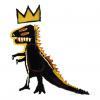November 8, 2016 - 08:48

In Geismar’s “The Art of Anthropology: Questioning Contemporary Art in Ethnographic Display” we begin to unpack contemporary ethnographis museum pedagogies that are constructed in hopes of dismantling the westernized center. Contemporary art in this context is described as a language centered in modern art contexts that come with a desired visual aesthetic. She notes the supremacy of this framework within art spaces, as well as ethnographic ones. While "Artist Warriors" like Frank Wilson and the mentioned use the formalities of the art world to confront the parameters set by necessitated cultural foundations, and products of a “free thinking” artist. The presentation of this dichotomy continues to present the two as separate languages to understand form (art), or cultural information (artifacts. However, Geismar reminds us the two were created together. Both created to build systems of value and classifications. Geismar used this essay to argue for contemporary art to be analyzed similarly to ethnographic artifacts. A revision in favor to this connection is made in hopes to building an understanding of the ways art adds to the politics behind representing. In the mentioned case studies, the artists resume a role fit to recognize their ability to be agents of connection. Thus, making the museum a contact zone for the two worlds to meet. Art being brought to the same plane as ethnographic objects includes visually valued pieces as markers to the Western experience. Our artifacts are the work artists create. They document/ preserve our cultural makeup for the time. It is a great way to understand the make up of a community, hence the impulse to collect “artifacts” from differing communities.
